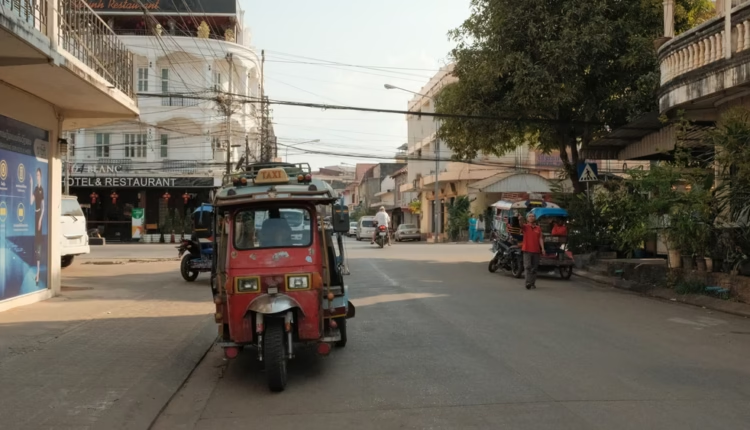A Look at Specialty-Coffee Culture in Laos

We take a deep dive into the history of Lao coffee production and explore 3 noteworthy coffee shops in the southeast Asian country.
BY MICHAELA TOMCHEK & EMILY JOY MENESES
BARISTA MAGAZINE ONLINE
Photos by Michaela Tomchek unless otherwise noted
While southeast Asian coffee culture is typically associated with the rituals of Vietnam and Indonesia, Laos is an underrated gem: home to several coffee-growing regions and a burgeoning café scene. Since the early 20th century, the country has had a long, complex history of production—a story of both loss and triumph.
Today, we’ll take a closer look at Lao coffee culture—spanning from the days of colonization to now—and highlight some of the country’s noteworthy cafés.
Coffee Production in Laos: A Brief History
Lao coffee production began in the early 1900s, with the crop first arriving via French colonization. Soon after, a region called the Bolaven Plateau became the country’s primary coffee-growing area. In early years, arabica was the main coffee species grown throughout Laos, until an outbreak of coffee rust and weather-related challenges pushed farmers to turn to robusta.
As in other southeast Asian countries like Vietnam, Laos’ coffee industry took a significant hit after World War II and the Vietnam War. However, in recent years, the country’s coffee producers have been working to revive arabica production and re-establish the presence of Lao coffee on the global stage. This resurgence has been significant, with many farms today being run by cooperatives of smallholder Laotian farmers.
Today, Laotians typically brew coffee with a cloth filter and mix it with condensed milk and ice, similar to Vietnamese coffee. Ideal environmental conditions in the country’s coffee-growing regions, including high altitudes and volcanic soil, make for unique flavor profiles in the beans themselves.
Professor Thamrong Loysak (also known as Professor Duang)—who is originally from Thailand but came to Laos in 2008 to assist with a forestry initiative—shares that he’s grown incredibly passionate about Lao coffee over the years, and is now working to help it gain international recognition.
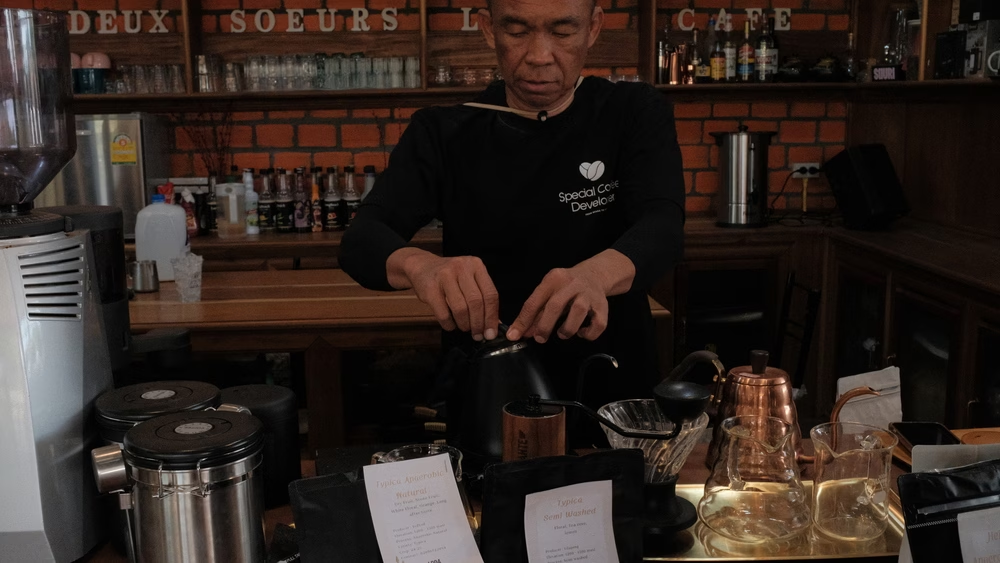

“Knowledge about specialty-coffee (in Laos) has only just begun to emerge in the past 2-3 years,” he says, adding that the movement has been further propelled by the Lao Coffee Association, which now offers training courses such as Q-processing and Q-grading.
To get an even more vivid look at Lao coffee culture, we visited three noteworthy cafés: CC 1971, Caffeine, and 124 Thaluang.
3 Cafés to Visit in Laos
CC 1971 Café
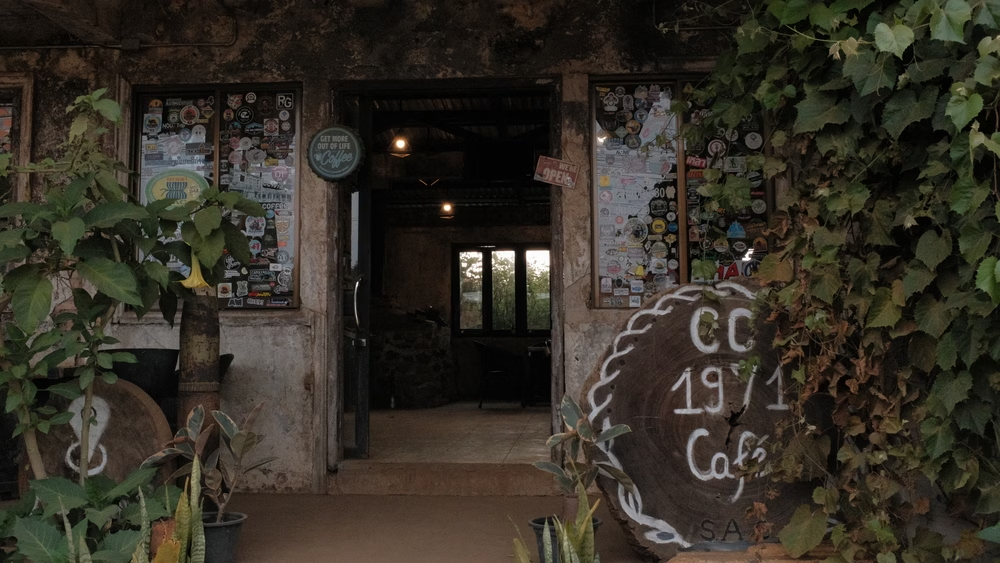

Within Laos’ main coffee-growing region, the Bolaven Plateau, you’ll find the city of Paksong: a coffee hub where the crop is exported to neighboring countries. Throughout the region, you’ll find a number of large coffee estates and a wide array of coffee shops worth visiting. One such place is CC 1971 Café: a shop that gives a unique look into Laos’ history.
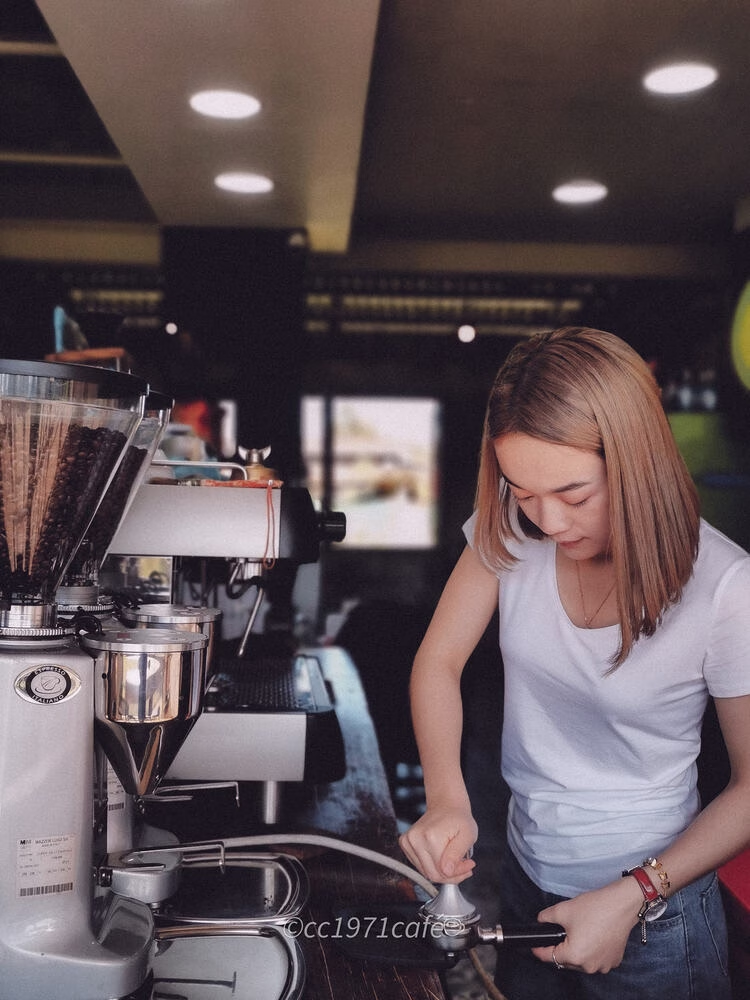


The coffee shop is named after the year that military conflict during the Vietnam War led to the destruction of buildings in Laos, including the one that the café currently resides in. The outside walls of the café are visibly worn down and cracked—bearing battle scars from a time of struggle—and yet, the building still stands, and is now considered a relic and reminder of what the country has overcome.



Apart from being a historical landmark, CC 1971 Café also offers high-quality coffee from local farms. Sit and enjoy a shot of espresso or an iced latte for a unique opportunity to immerse yourself in specialty-coffee and history all at once.
Caffeine
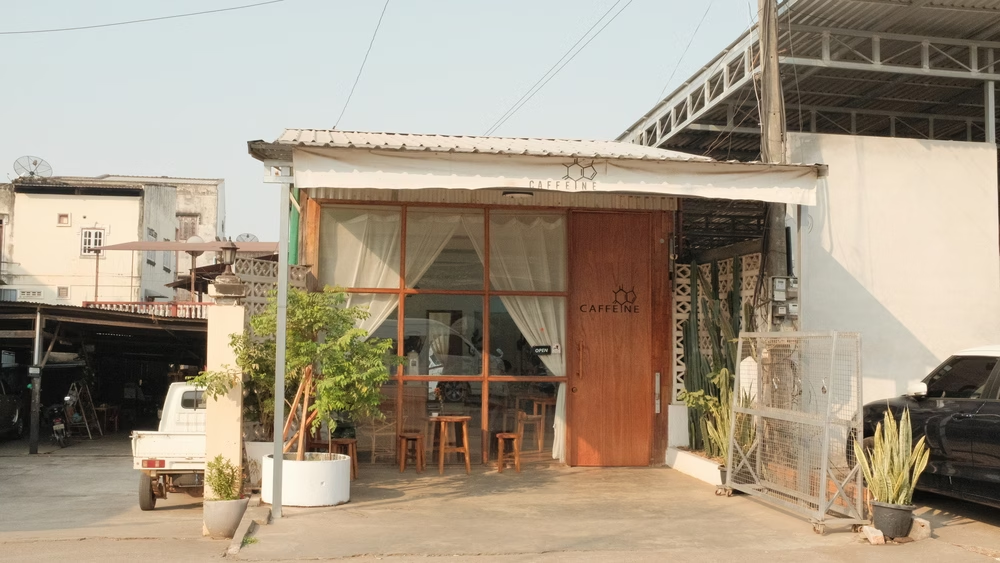


On the outskirts of the Bolaven Plateau is the more urbanized city of Pakse: a bustling town situated between the Mekong and Xe Don rivers. Here is where you’ll find a coffee shop aptly named Caffeine: a zen retreat to get your morning brew before heading to see the Vat Phou Temple.
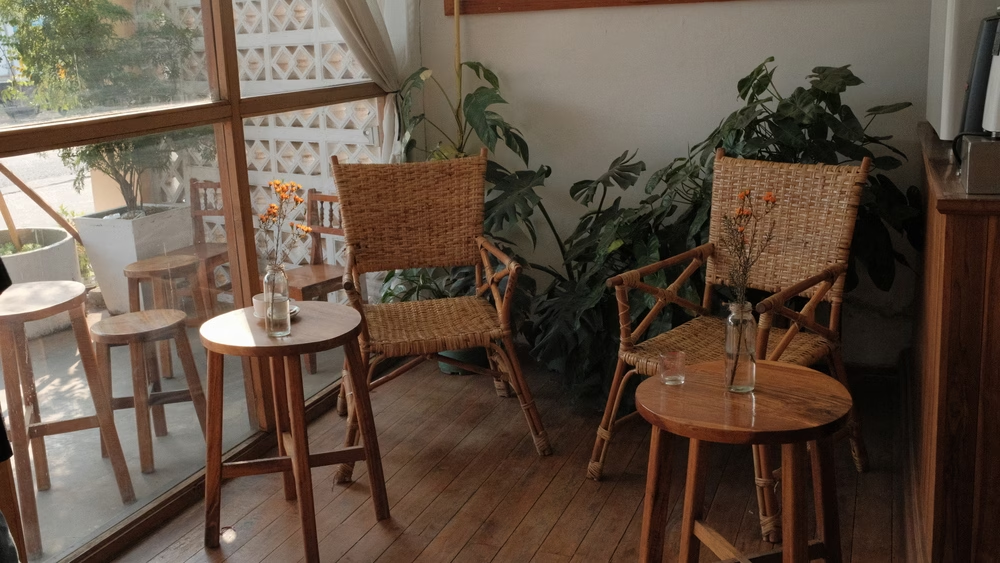


Upon entering the coffee shop, you’ll be greeted with chic, calming decor, including comfy rattan chairs and wooden tables adorned with small vases of delicate flowers. On the menu, you’ll find coffee varieties from all over the world as well as locally-grown coffee. While many tourists frequent this spot, the occasional local will also pop in for their caffeine fix. Stop by for a pourover and a bite of cake—you won’t regret it.
124 Thaluang Coffee
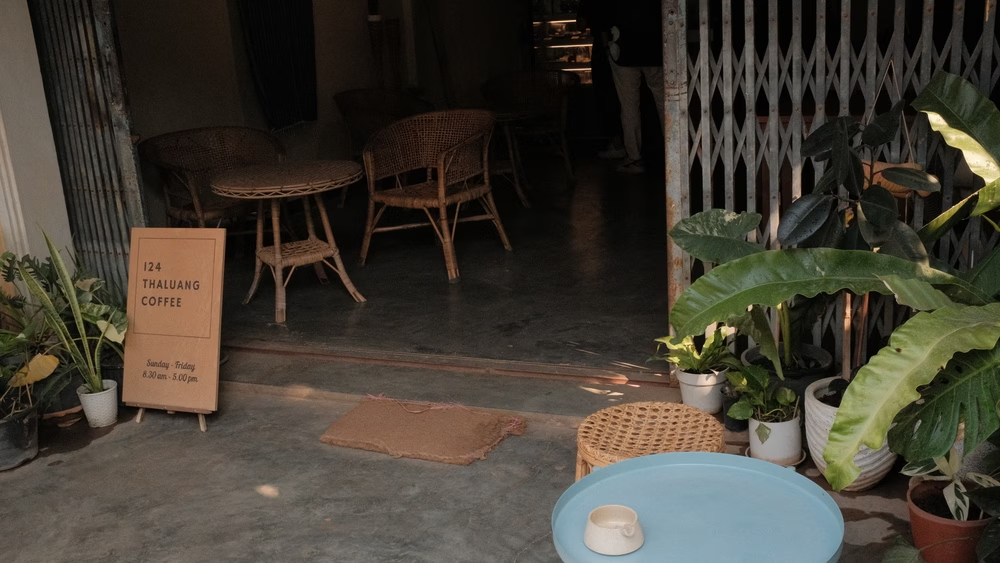


Our last coffee stop in Laos, 124 Thaluang Coffee is known for being a trailblazer in the Lao specialty-coffee scene, being one of the first coffee shops to put an emphasis on the third-wave coffee movement. Founded by Japanese immigrants, the shop is named after the village where the café is tucked away. On the menu, you’ll find espresso, pourovers, tea, and iced drinks—and everything is brewed with care and precision.
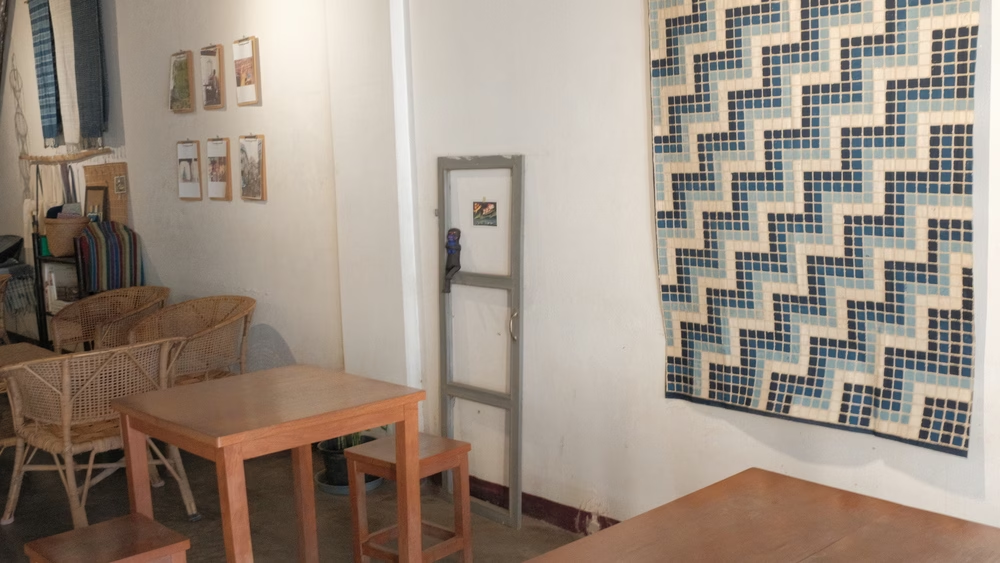


The inside of the coffee shop is decorated with lush plants and wicker furniture, providing a comfortable, breezy space to relax. Apart from offering high-quality beverages, 124 Thaluang also offers an array of tasty pastries, including some must-try fig bread. The shop also has locally made crafts for sale, including ceramics and embroidered bags. This is truly a hidden gem in Paske—an absolute must-see.
Looking Ahead
Reflecting on the growth that Laos’ specialty-coffee culture has seen recently, Professor Duang expresses his high hopes for the coming years. “Overall, Laos’ coffee scene is still moving towards meeting the commercial market,” he says, “but I hope that, in the future, specialty-coffee from Laos will be able to excite coffee lovers (around the world).”
ABOUT THE AUTHORS
Michaela Tomchek finds coffee an important part of life and the world. She is an appreciator of the crop, the producer, and the many cafés throughout the world serving beautiful beverages. Currently, she writes about coffee, hoping to spread her joy across the globe.
Emily Joy Meneses is a Filipina writer and musician based in Los Angeles, and the online editor at Barista Magazine. On any given day, you can find her thrifting, journaling, or playing shoegaze with her band.
Subscribe and More!
As always, you can read Barista Magazine in paper by subscribing or ordering an issue.
Read the June + July 2025 Issue for free with our digital edition.
For free access to more than five years’ worth of issues, visit our digital edition archives here.
Source: Barista Magazine



